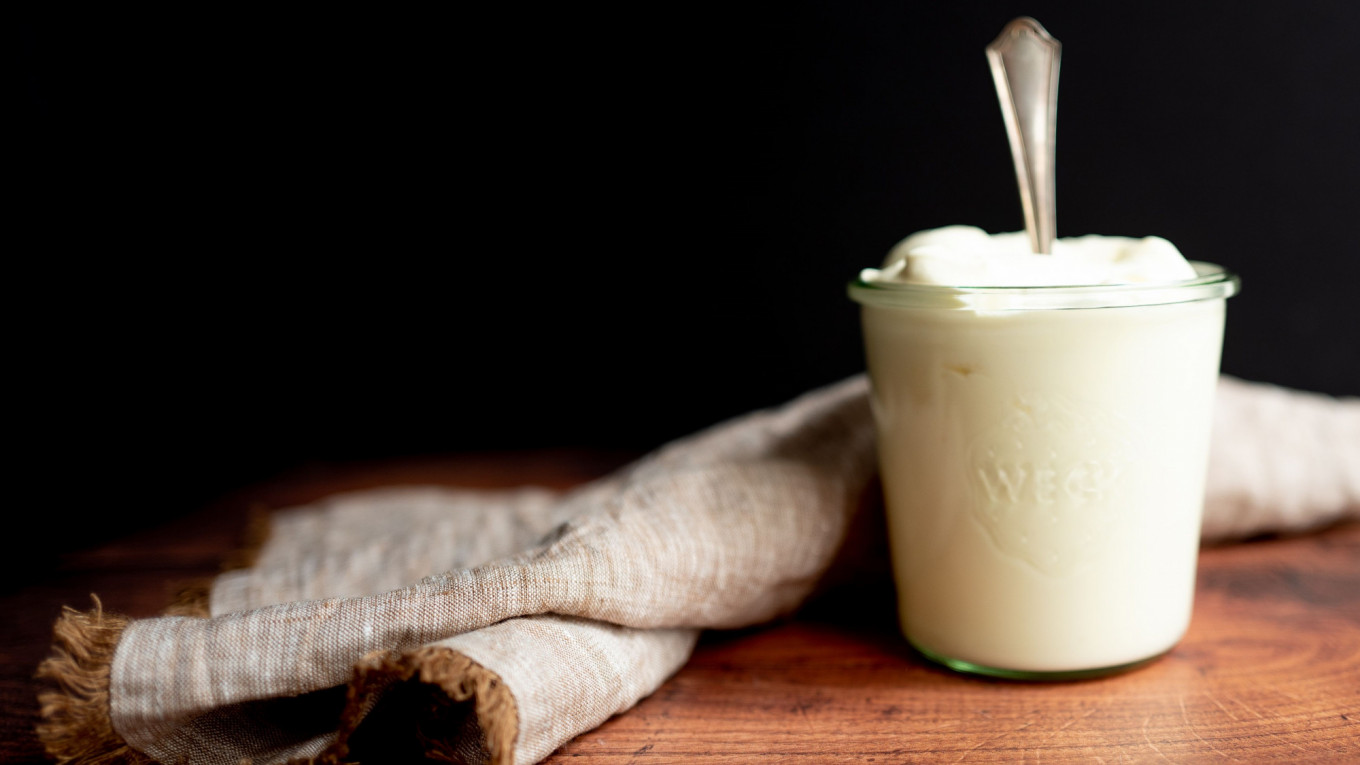Smetana, or Russian sour cream, never loomed large in my life until that life was transplanted into Russia. I knew smetana existed, of course, and I knew it had a far more glamorous European cousin called crème fraîche. And I knew that sour cream was an essential ingredient in everything from baked potatoes to cheesecake, but not being a fan of either, or because I truly loathe Mexican food, I avoided smetana for almost three decades.
And then I moved to Russia, a land positively flowing with smetana. And I had to reassess this essential Eastern European dairy product.
What is smetana?
The first thing I discovered about smetana was that, in its purest form, it was a far different thing from the anemic, milk-and-water contents of the red and white container sold in most American supermarkets. Real Russian smetana has far more character: more tang and tartness, with an unapologetic creaminess that makes it almost sweet. Real Russian smetana, as it is sold in Moscow’s markets, after the mandatory ritual sampling several different kinds from folded strips of paper, is so thick that a spoon easily stands up in it with no support. And real Russian smetana is one of the foundational flavors and textures of Russian cuisine, present all the year round: in winter it turns pedestrian shaved meat and mushrooms into glossy Beef Stroganoff, in spring, it is spooned into sour soups made from early shoots and peppery leaves; at summer’s height, we toss smetana with crunchy garden vegetables and crisp herbs for salad, and when fall comes, we marry smetana to autumn’s bounty of mushrooms for soups, stews, and Russia’s beloved mushroom julien.
What’s the difference between sour cream and crème fraîche?
My childhood notion that sour cream and crème fraîche were cousins was not far off. Both are cultured dairy products, but crème fraîche is made with cream that has a fat content of 30%, whereas sour cream is made with 20% fat cream. Crème fraîche has less piquancy, and a more malleable and neutral flavor, which is why it is more popular with classic desserts, and its thicker consistency makes it ideal for thickening sauces and stews. Sour cream, with its lower fat content, is popular in salads and as a condiment, though when homemade sour cream encounters heat, it can curdle, which is why manufacturers often put gelatin and gum into processed sour cream, to help it stay whole.
The best Russian smetana veers closer to crème fraîche — at least my Leningradsky market dairy lady’s does, and now, so does my own homemade version.

Can you make smetana at home?
I never thought to make my own sour cream until lockdown, when I put myself on a very strict regime of only going to the supermarket every 12 days. It’s an ill wind that blows no good, and in desperation, I began with yogurt, and then kefir, ricotta, and tvorog soon followed. It was only a matter of time before I branched out into smetana.
You can approach sour cream making from several angles, depending on the two key variables: temperature and the specific bacteria you introduce to the cream to culture it. Using buttermilk or kefir as your culture starter encourages mesophilic bacteria, which do well in temperatures between 75ºF-85ºF, whereas a yogurt starter produces thermophilic bacteria such as lactobacilli, which require warmer temperatures between 100ºF -115ºF (43ºC-46ºC) to do their work. I’ve tried both versions and find it easier to create a consistent temperature of 110ºF in my Instapot, with its convenient yogurt function, rather than the elusive-for-me 75ºF-85ºF on my countertop. For those who live in climates where this is room temperature for at least 18 hours a day should certainly give the buttermilk/kefir option a try, but I will confess to being frustrated in my attempts to keep the oven at such a low temperature, even on its proofing setting for that duration.
There are many recipes for smetana that involve mixing milk, cream, and buttermilk and allowing these to sour on the countertop. I don’t find this as effective as culturing the cream: for one reason the curds and whey are more likely to separate, and I also feel that any time you can reintroduce healthy bacteria into your system, your should go for it. The milk, cream, and buttermilk option won’t achieve that.
Homemade smetana in the Instapot
Ingredients
- 16 oz (473 ml) pasteurized cream (20%-30% fat content)*
- 2 Tbsp plain yogurt with culture
Instructions
- Place the cream in a clean, heat proof glass container (I use a 750 ml Weck Jar). Place a trivet at the bottom of the Instapot insert and add 1-2 cups of water. Carefully place the jar with cream on the trivet.
- Attach the lid to the Instapot and program it on “SAUTÉ” for one minute. After the pot has completed its cycle, allow for a natural release, then remove the jar to the countertop to cool. When the cream has cooled to 110ºF º (43ºC), add the yogurt to the cream and gently stir to combine. Discard the water from the Instapot insert. Place the jar on the trivet and program the Instapot to its “YOGURT” function on LOW for 16-20 hours. Chill the smetana for at least 4 hours before use to allow it to set.
Homemade smetana on the countertop
Ingredients
- 16 oz (473 ml) pasteurized cream (20% — 30% fat content)*
- 2 Tbsp buttermilk or kefir
Instructions
- Place the cream into a clean glass jar with a lid. Gently mix the buttermilk or kefir into the cream. Affix the lid loosely or cover the top with several layers of cheesecloth held a rubber band. Place the jar somewhere with a steady temperature of 75ºF - 85ºF (23ºC - 29ºC) for 18 - 24 hours. If you have a proofing box or setting on your oven, this might be the perfect option. Some have found it possible to achieve this temperature by turning the oven on for 20 minutes, then turning it off, but leaving the light on.
- Chill the smetana for at least four hours to allow it to set.
*If you are lucky enough to have access to non-pasteurized cream, the process is even simpler, because the natural bacteria in the cream will culture itself. Simply put your cream in a clean glass container and cover it with a loose lid or several layers of cheesecloth. Allow the cream to sit at room temperature for 18-24 hours and you will have perfect smetana!
A jar of homemade smetana will last up to two weeks in the refrigerator, but I find it never lasts that long in our household.
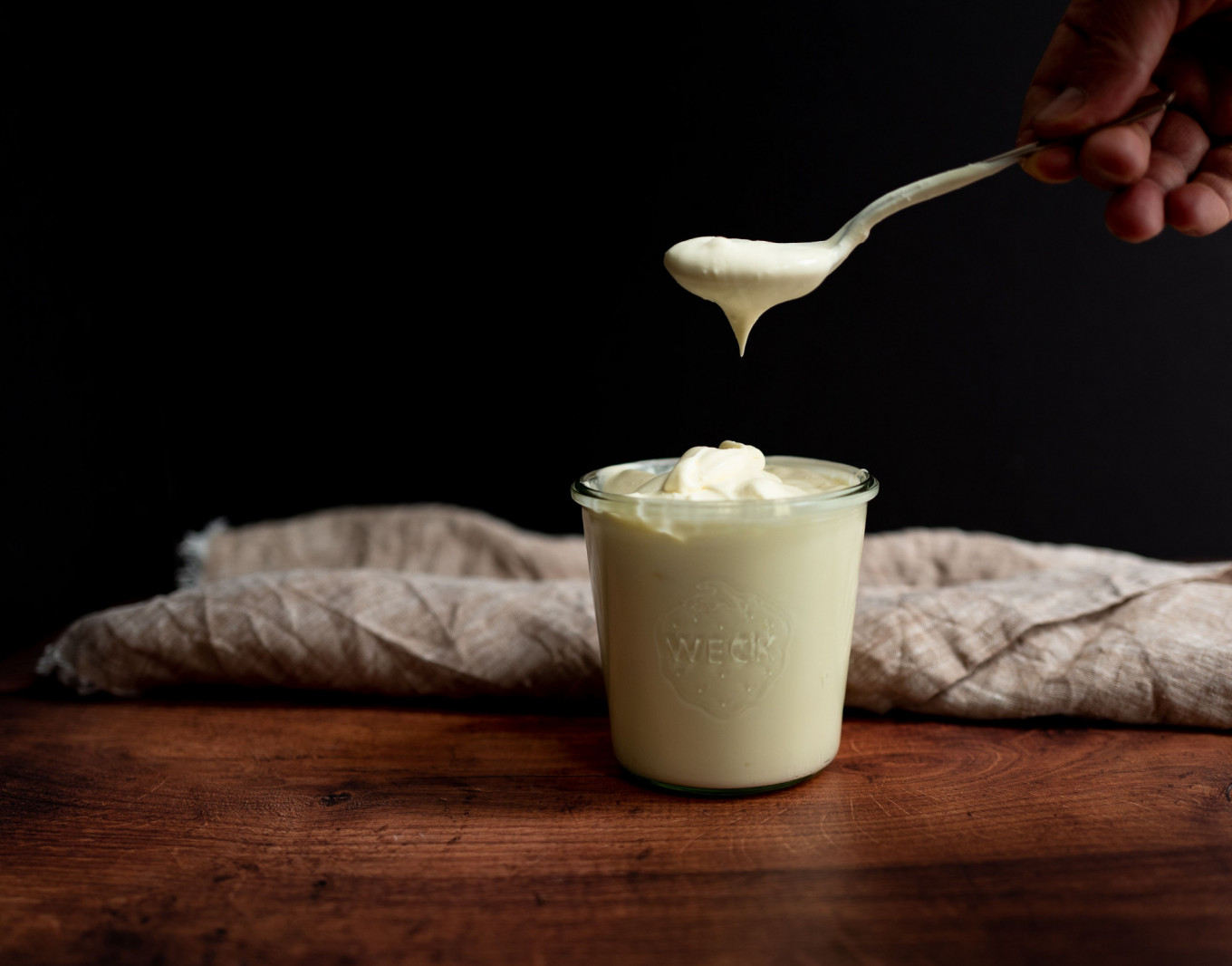
What can you make with smetana?
Once you have your smetana, a world of possibilities opens up. One of smetana’s greatest virtues is its ability to be both condiment and ingredient in hot or cold, savory or sweet dishes. You might go the sweet route with a medovik, a Russian honey cake, or a smetannik, Russia’s dense snack cake. You may reserve it for topping soups, so very much a staple of the Russian midday meal, even as the weather gets hotter.
I’m moving into my summer mode and using my smetana in three dishes that are wildly popular in our household: caramelized onion and sour cream dip, cucumber and radish salad, and herring in sour cream sauce. So even if you are not inclined to make your own smetana, try one (or all) of these fresh and delightful summer dishes.
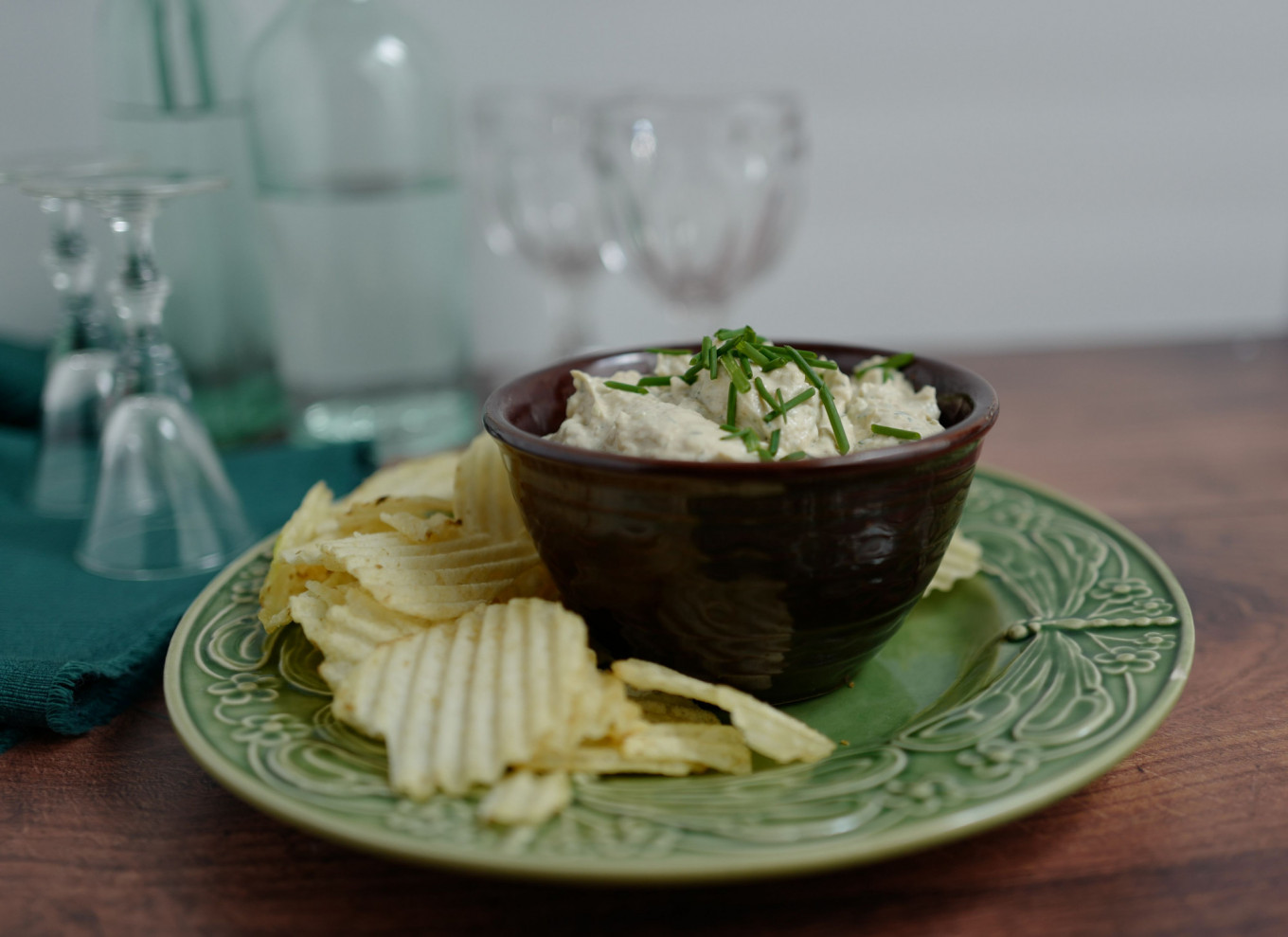
Caramelized onion and sour cream dip
This dip is certainly not a classic of Russian culinary canon, but has been a house special at my Moscow table for more than a decade. It began with a friend’s homesickness for Lipton’s onion soup dip — a yearning so poignant that I reduced myself to floods of tears peeling and slicing a mountain of yellow onions, which I then caramelized and whipped up with a jar of perfect smetana from my dairy lady at Leningradsky market. Being me, I put a lot of other things into it as well, and the finished project ended up being far spicier than Lipton’s, but was still heralded as a triumph by not only the homesick American, but also by Russian friends. The latter slathered the dip on their shashlik, which oddly works very well indeed. This dip is a success with chips and crudites, and the perfect complement to a fizzy summer cocktail, cold beer, or crisp white wine.
Ingredients
- 2 ½ cups (590 ml) finely sliced yellow onions and shallots (the thinner the better here — I use a mandoline to make quick work of this job with no tears!)
- 2 Tbsp olive oil
- 2 tsp sugar
- 2 tsps. of salt
- 2 cups (473 ml) smetana
- 1 cup (240 ml) best quality mayonnaise
- 1 tsp anchovy paste
- 1 Tbsp prepared horseradish
- 2 Tbsp fresh lemon juice
- 2 tsp white pepper
- ¼ cup (60 ml) of fresh parsley
- Freshly snipped chives to garnish
Instructions
- Heat the olive oil in a heavy skillet. When it is sizzling, add the onions, and sprinkle them with the salt and sugar. Lower the heat to medium-low and cook the onions until they are caramelized completely; they should be brown and taste slightly sweet. Keep your eye on them as they cook to ensure they don’t burn — if they seem to be drying out, add a few teaspoons of white wine or water. Allow the onions to cool to room temperature.
- Combine the caramelized onions with the remaining ingredients in a food processor fitted with a steel blade and pulse a few times to combine the ingredients. Chill for at least 2 hours before serving. Snip fresh chives on top before serving.
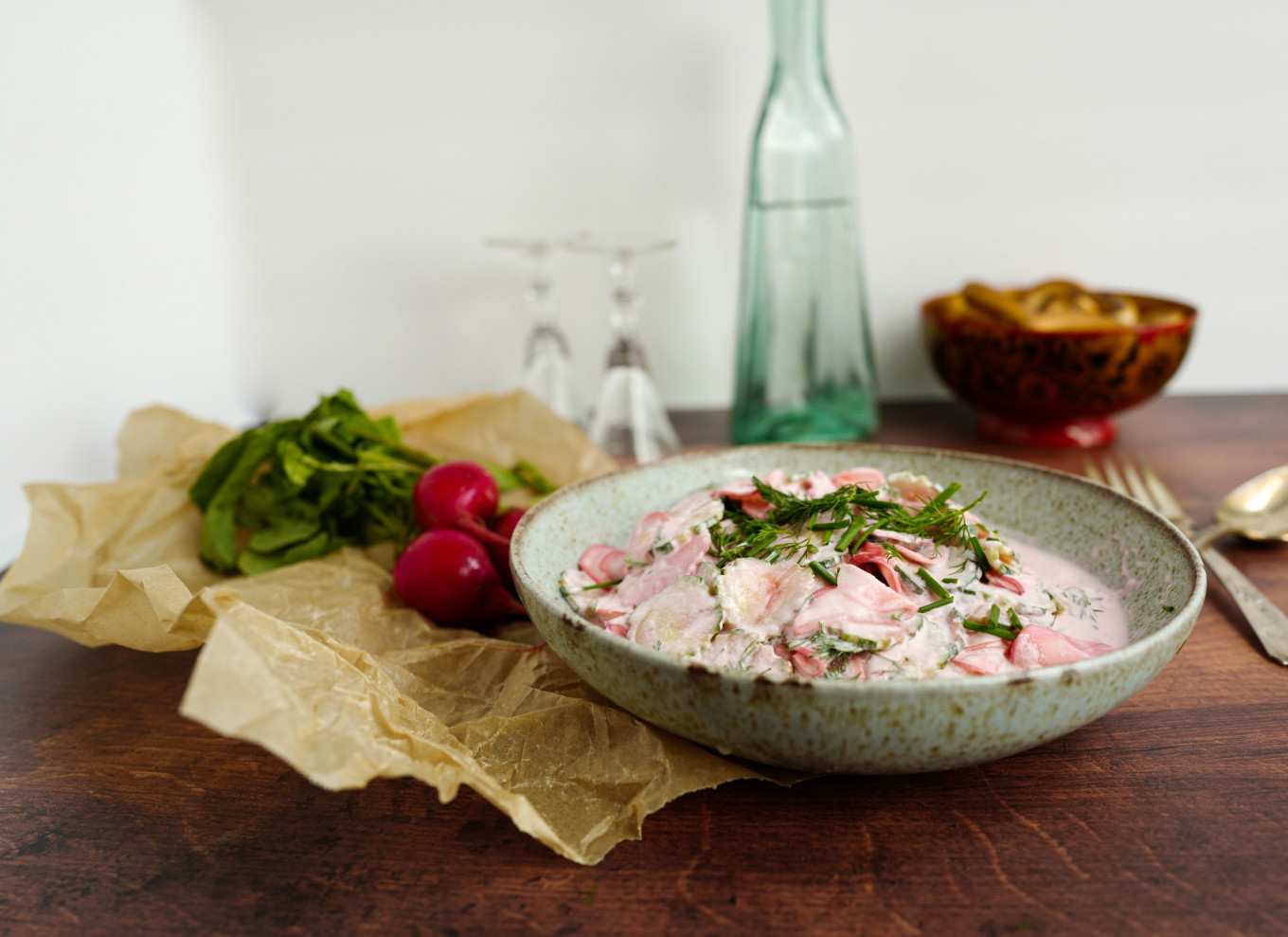
Cucumber and radish salad with sour cream
Unlike onion dip, cucumber and radish salad is a staple of Russian cuisine, and one that comes into its own in summer — and on a warm day, what could be a nicer side than this delightful combination of super creamy meeting deliciously crunchy with its undercurrent of salty? The secret of this salad is a quick pickle and a long chill, before a final garnish of lots and lots of fresh herbs. This is the perfect summer entertaining salad, which you can (or rather, you must) make ahead of time, and bring to the table looking like the essence of cool and crispy. Bulk it up with quinoa or small pasta such as orzo, or try it alongside poached fish, shrimp salad, or literally anything off the mangal grill.
Ingredients
- 2 cups (473 ml) thinly-sliced cucumbers
- 1 cup (240 ml) thinly-sliced radishes
- ½ cup (125 ml) thinly-sliced red onions
- 1 cup (240) white vinegar
- ¼ cup (60 ml) white sugar
- ⅓ cup (80 ml) salt
- 1 cup (240 ml) smetana
- 3 Tbsp mayonnaise
- 2 tsp white pepper
- ¼ cup (60 ml) fresh dill
- More fresh dill, chives, and possibly mint to garnish
Instructions
- Whisk the salt and sugar into the white vinegar until both have dissolved.
- Toss the cucumbers, radish, and red onions into the vinegar mixture. Cover and chill for at least 1 hour.
- Whisk together the smetana, mayonnaise, and white pepper. Drain the pickled vegetables and pat them dry with a paper towel. Gently toss them with the smetana mixture and chill for at least 2 hours. Before serving, toss the fresh dill into the salad, then top with more dill, snipped chives and/or fresh mint.
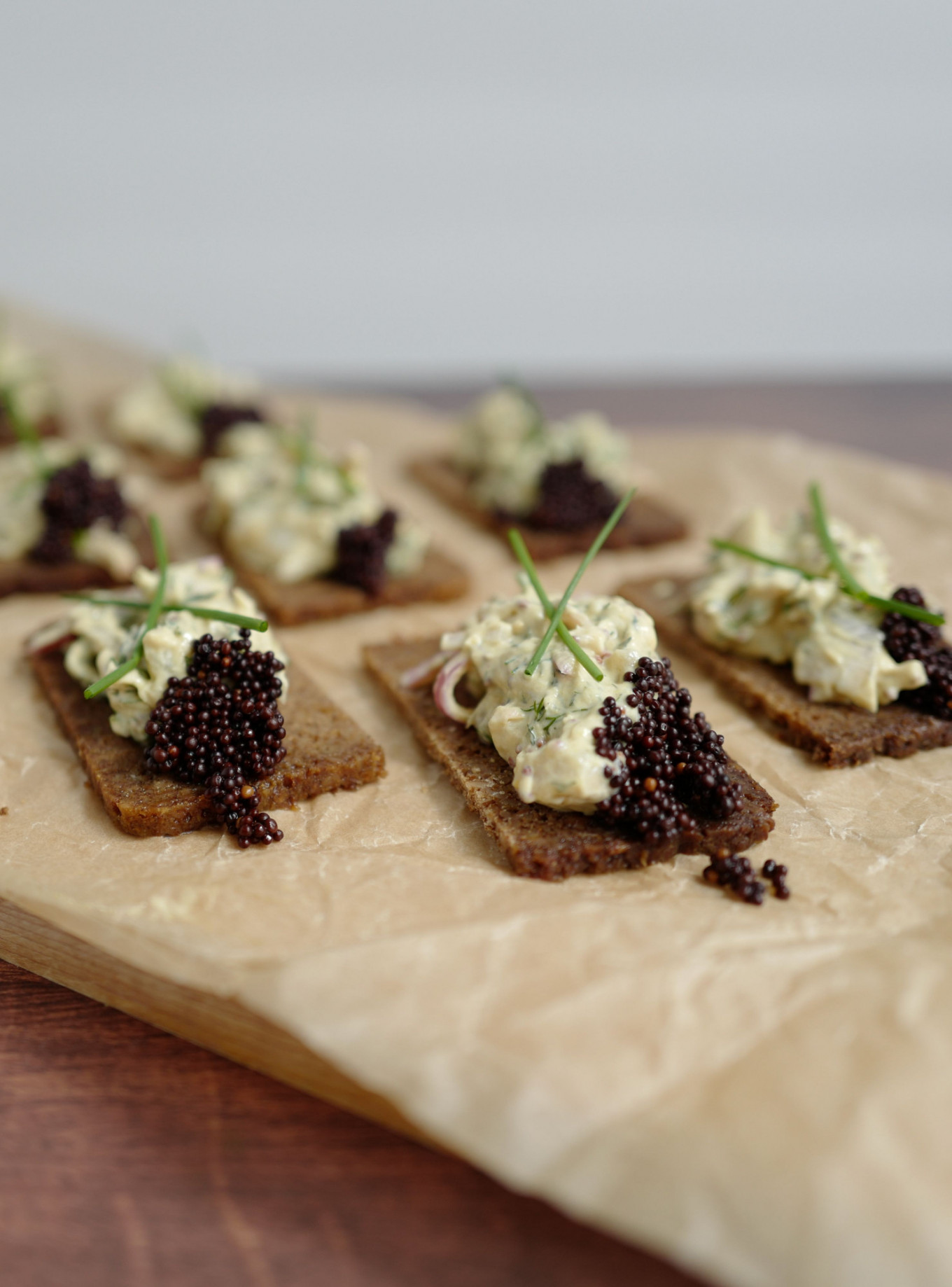
Senapssill toasts: herring and sour cream and mustard sauce
Herring + sour cream is key food pairing all around the Baltic littoral, and what a delectable combination: almost meaty fish, made more piquant when “soused” with salty brine and spiked with onions and peppercorns, and the full-bodied, creamy richness of homemade smetana. This recipe adds Dijon and honey mustard and lots of dill as well in a classic Swedish recipe for Senapssill, based on a marvelous recipe in Johanna Kindvall’s “Smörgasbörd: The Art of Swedish Breads and Savory Treats.” Like the Swedes, I love this served simply on dark rye bread with a garnish of pickled mustard seeds, but I’ve also turned this into a full meal by stuffing it into baked potatoes or, for a slightly lighter version, served alongside boiled new potatoes with a side of watercress. Any way you spread it, this Senapssill is a treat!
Ingredients
- One 14 oz (390 grams) jar of soused or pickled herring, onions and other spices discarded
- ½ cup (125 ml) smetana
- 2 Tbsp honey mustard
- 2 Tbsp Dijon mustard
- ¼ cup (60 ml) finely chopped dill
- 1 Tbsp prepared horseradish
- 3 Tbsp diced red onion
- Fresh ground pepper
- For serving: more dill, snipped chives and (optional but recommended)
- ½ cup (125 ml) pickled mustard seeds*
Instructions
- Slice the herring into 1-centimeter cubes. Rinse the herring under cool water.
- Whisk together the smetana, mustards, horseradish, dill, and chopped onion. Taste and adjust seasonings — you should not need more salt, but you may wish to add some more pepper, depending on how hot your horseradish is.
- Toss the herring in the sauce and chill the mixture for 4-6 hours before serving to allow the flavors to develop.
- Serve on rye toast, inside deviled eggs, alongside new potatoes, on crackers or any way you choose to enjoy this marvelous version of herring salad!
*To pickle mustard seeds: combine ½ cup (125 ml) yellow or brown mustard seeds in a solution of 2 cups (473 ml) apple cider vinegar mixed with ¼ cup (60 ml) honey and ¼ cup (60 ml) salt. Bring to a simmer, then lower the heat, cover, and gently simmer for 1-2 hours until the mustard seeds are plump and the consistency of black caviar eggs. Decant the seeds into a clean glass jar and refrigerate for up to 3 weeks.
A Message from The Moscow Times:
Dear readers,
We are facing unprecedented challenges. Russia's Prosecutor General's Office has designated The Moscow Times as an "undesirable" organization, criminalizing our work and putting our staff at risk of prosecution. This follows our earlier unjust labeling as a "foreign agent."
These actions are direct attempts to silence independent journalism in Russia. The authorities claim our work "discredits the decisions of the Russian leadership." We see things differently: we strive to provide accurate, unbiased reporting on Russia.
We, the journalists of The Moscow Times, refuse to be silenced. But to continue our work, we need your help.
Your support, no matter how small, makes a world of difference. If you can, please support us monthly starting from just $2. It's quick to set up, and every contribution makes a significant impact.
By supporting The Moscow Times, you're defending open, independent journalism in the face of repression. Thank you for standing with us.
Remind me later.



